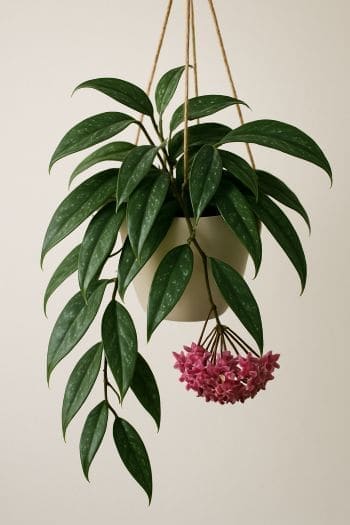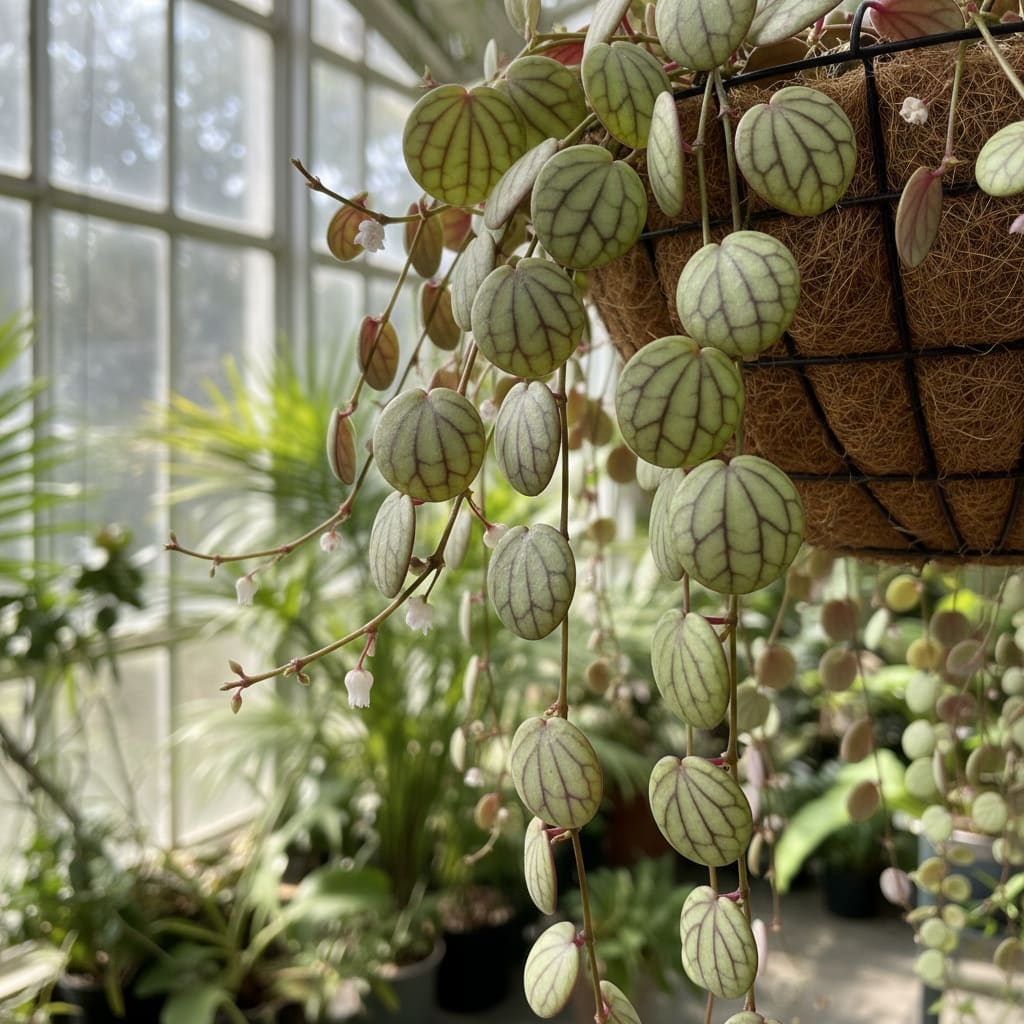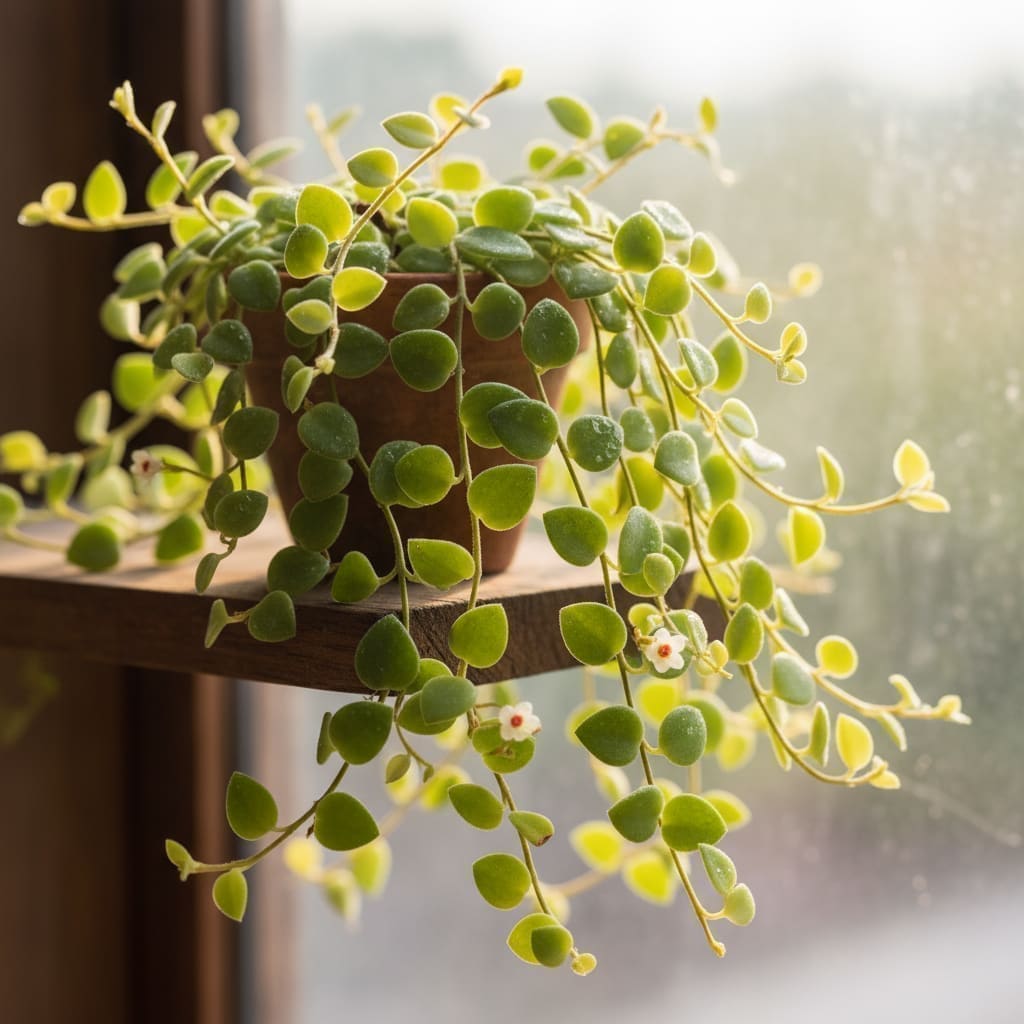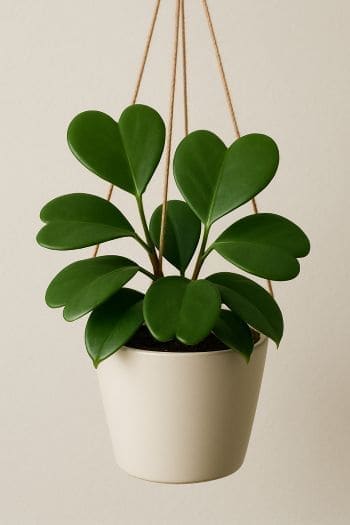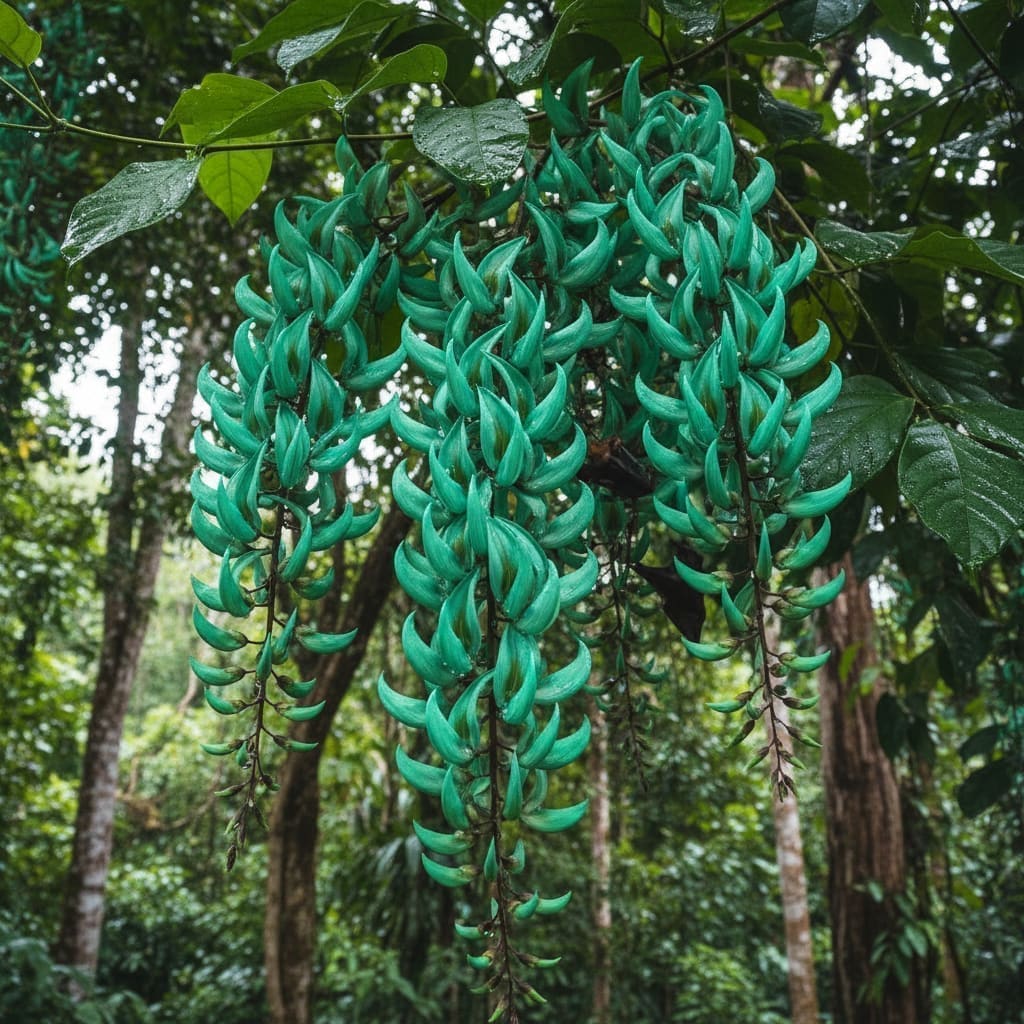Hoya pubicalyx Care & Growing Guide
Overview
Hoya pubicalyx is a vigorous, evergreen vining plant native to the Philippines. Belonging to the Apocynaceae family, it is prized for its long, trailing stems, glossy lance-shaped leaves, and clusters of fragrant, star-shaped flowers. In its native tropical habitat, it uses surrounding vegetation for support, climbing toward light while producing nectar-rich blooms that attract pollinators. Indoors, it is a popular choice for hanging baskets or trained on trellises and moss poles.
Known for being relatively easy to care for, Hoya pubicalyx thrives in bright, indirect light and appreciates consistent moisture with good drainage. Its ability to adapt to various indoor conditions, combined with its striking foliage and blooms, makes it a favorite among houseplant enthusiasts.
Identification & Growth Habit
Hoya pubicalyx is a fast-growing climber or trailer. Its leaves are typically narrow, pointed, and dark green, often speckled with silver or pink variegation. Mature leaves can reach 5–8 cm in width and 10–15 cm in length. The plant produces umbels of small, waxy flowers in shades of pink to deep red, each with a contrasting star-shaped corona.
Given adequate support, such as a trellis or moss pole, it will climb vertically. Without support, stems trail attractively, making it suitable for hanging displays. In optimal conditions, vines can extend several feet in a single growing season.
Light & Placement
Place your Hoya pubicalyx in a location with bright, indirect light. A position near an east- or west-facing window filtered by sheer curtains is ideal. Avoid prolonged direct midday sun, which can scorch leaves, but note that insufficient light may reduce flowering. If natural light is limited, supplement with a full-spectrum grow light.
Rotate the plant every few weeks to encourage even growth and prevent stems from leaning toward the light source.
Watering & Humidity
Water when the top 1–2 inches (2.5–5 cm) of soil feel dry to the touch. Water thoroughly until excess drains from the pot’s drainage holes, then empty the saucer. Overwatering can lead to root rot, so ensure the potting mix dries slightly between waterings.
Humidity: This species prefers high humidity levels of 60–80%. In drier indoor environments, increase humidity by:
- Using a room humidifier
- Placing the pot on a pebble tray with water (without submerging the base)
- Grouping plants together to create a microclimate
Soil & Repotting
Use a well-draining, airy potting mix to prevent waterlogged roots. A recommended blend includes equal parts orchid bark, perlite, and a peat-based potting soil. This combination ensures good aeration while retaining enough moisture for healthy growth.
Repot every 2–3 years or when roots become crowded. Choose a pot only 1–2 inches larger in diameter than the current one to avoid excessive soil moisture retention.
Fertilizing
During the active growing season (spring and summer), feed monthly with a balanced liquid fertilizer diluted to half strength. Avoid overfertilizing, as excess salts can damage roots. Suspend feeding in autumn and winter when growth slows.
Pruning & Training
Prune to control size, remove damaged leaves, and encourage branching. Use clean, sharp scissors or pruning shears to cut just above a node. For vertical growth, train stems onto a moss pole, trellis, or hoop. For a cascading effect, allow stems to trail from a hanging basket.
Do not remove the short leafless spurs (peduncles) after flowering; these structures can rebloom in subsequent seasons.
Propagation
Step-by-Step Stem Cutting Method
- Select a healthy stem with at least two nodes and several leaves.
- Using sterilized scissors, cut just below a node.
- Remove the lower leaves to expose the nodes.
- Place the cutting in water or directly into a moist, well-draining potting mix.
- If rooting in water, change the water every few days to keep it fresh.
- Once roots are 1–2 inches long, transplant into a small pot with the recommended soil mix.
Common Problems
Pests
- Mealybugs: Look for white, cottony clusters on stems and leaf joints. Remove with a cotton swab dipped in alcohol and treat with insecticidal soap.
- Spider mites: Fine webbing and stippled leaves indicate infestation. Increase humidity and use miticide or insecticidal soap.
- Scale insects: Brown, shell-like bumps on stems. Gently scrape off and treat with horticultural oil.
Diseases
- Root rot: Caused by overwatering or poor drainage. Remove affected roots, repot in fresh soil, and adjust watering practices.
- Leaf spot: Fungal or bacterial spots may occur in overly damp conditions. Improve air circulation and remove affected leaves.
Toxicity & Pet Safety
Hoya pubicalyx is considered toxic if ingested by pets or humans. Keep out of reach of cats, dogs, and children. Contact a veterinarian if ingestion is suspected.
Styling & Decor Tips
- Train on a decorative trellis for a vertical accent in bright rooms.
- Use in hanging baskets to showcase trailing vines and cascading growth.
- Pair with contrasting foliage plants for visual interest.
- Place near seating areas to enjoy the fragrance of blooms.
Varieties & Cultivars
Several cultivars of Hoya pubicalyx exist, often distinguished by leaf variegation and flower color intensity. Examples include:
- 'Splash' – Leaves heavily speckled with silver.
- 'Pink Silver' – Pink-tinged blooms with silver-flecked foliage.
- 'Royal Hawaiian Purple' – Deep purple flowers with a rich fragrance.
Buying Tips & Maturity
When purchasing, look for plants with healthy, unblemished leaves and no signs of pests. Check that the soil is not waterlogged. Younger plants may take several years to bloom, while mature specimens often flower more readily when given optimal light and care.
Seasonal Care
- Spring/Summer: Active growth period; increase watering frequency, maintain high humidity, and fertilize monthly.
- Autumn/Winter: Growth slows; reduce watering, stop fertilizing, and keep in a bright location away from cold drafts.
FAQ
- How often does Hoya pubicalyx bloom? With adequate light and care, mature plants may bloom annually, often in spring or summer.
- Can I grow Hoya pubicalyx outdoors? In frost-free climates, it can be grown outdoors in bright, indirect light. Protect from direct harsh sun and cold temperatures.
- Why are my Hoya’s leaves yellowing? Common causes include overwatering, poor drainage, or sudden environmental changes.
- Should I mist my Hoya pubicalyx? Occasional misting can help, but a humidifier or pebble tray is more effective for maintaining high humidity.
- Do Hoyas like to be root-bound? They tolerate being slightly root-bound and may even bloom better in snug pots, but repot when roots become overly crowded.
Source: Wikipedia – Hoya pubicalyx
